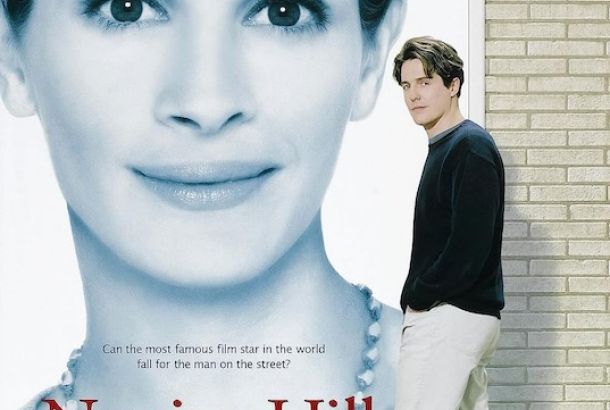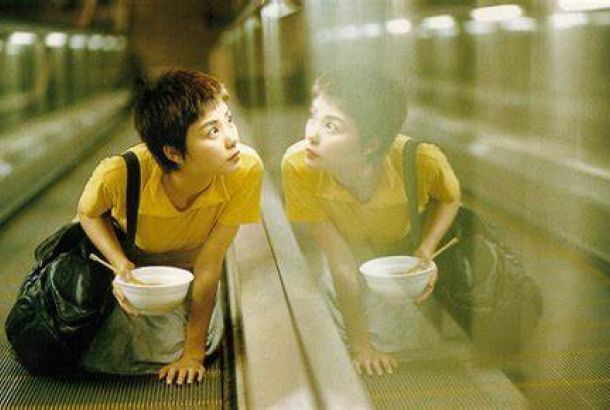
People are often surprised to hear just how monumental the original Scream was. It not only revitalised but radically reinvented the dated (if not dead) slasher genre. The film effectively satirised slasher, with its self-aware characters and meta commentary. These characters were aware of real-world horror films and openly discussed the clichés that the film attempted to subvert – including those seen in Wes Craven’s previous horror film, A Nightmare on Elm Street. Scream, then, can be considered a deconstruction of a genre that nobody had ever really taken seriously – perhaps for good reason.
Perhaps the lack of appreciation for Scream is because the series that reinvented slasher ironically became exactly what it was satirising, with its lacklustre metafiction commentary and over-reliance on clichés. Scream 2 was a worthy successor, but then the franchise lost its way with the third movie. Scream 3 combines the violence of the slasher genre with comedy and “whodunit” mystery, while satirising the clichés of film trilogies – especially with its film-within-a-film, Stab 3. Ironic then isn’t it that the last film in the trilogy was as basic and clichéd as the trilogies it was attempting to parody?
The franchise was revived years later with Scream 4, which received similar criticisms to its predecessor but has enjoyed several positive reappraisals since, particularly for its prescient examination of the impact of social media.
Over a decade later, the franchise has been revived again. Simply called Scream, the film can be considered a “requel” (reboot-sequel), or soft reboot, the first in a new trilogy, with brand-new characters making up the main cast and “legacy characters” returning in supporting roles. The main trio – Neve Campbell, David Arquette and Courtney Cox – all returned for the fifth film, as did Skeet Ulrich from Scream (even though his character is dead) and Marley Shelton from Scream 4. We are also introduced to the relatives of deceased characters from the first film.
Whilst the Scream TV series was a full-on reboot (and it rebooted itself in its third season), the fifth film serves as a crossroads: a continuation of the original story and the beginning of a new chapter. This allows the writers to breathe fresh life into a fallen franchise, reinventing the franchise (and its “rules”) which reinvented slasher. In fact, the “rules” are changed pretty early on, with the film’s opening sequence diverging from the iconic openings to all of the previous films. Sure, it follows the same format before the title appears, but the aftermath – and an important revelation – makes it clear that, this time, things are going to be different.
Though billed as a relaunch, the film is very much a continuation of the original story, a direct sequel to Scream 4, and it relies heavily on the plot of the first film. Viewers unfamiliar with the franchise might not be completely lost, but they sure won’t be able to recognise and appreciate what’s happening.
Scream is at its best when it is self-aware, and the meta commentary of the franchise’s latest offering is nothing short of fantastic. Sometimes, it’s explicit, like when Mindy (Jasmin Savoy Brown) explains “requels” and suggests what might happen next. This included her assertion that the killer (or killers, as tends to be the case in Scream) is a Stab fanatic. Then there’s a scene where she is watching one of the Stab films: the Stab character watches TV, completely unaware that Ghostface is right behind them. Life imitates art, for Mindy, the supposed slasher expert, is completely unaware that the real Ghostface is right behind her. This provided some panto-esque humour: “He’s behind you,” I screamed internally.
For those of you who don’t know, the fictional Stab film series is based on a book by Gale Weathers (Courtney Cox), based on the events of the first Scream film. Stab has spawned seven sequels, its quality gradually declining and the latest offering receiving abysmal reviews – it’s a reboot that has nothing to do with the previous seven. Mindy explains that the recent string of murders taking place in Woodsboro are “fan-fiction” – an attempt by Stab fanatics to create a “worthy” sequel for their favourite franchise.
One of my favourite pieces of meta commentary probably went over the heads of most viewers. Two characters tear into the later Stab films, arguing that the franchise lost its way with the fifth film and criticising the decision to just call the eighth film Stab, not Stab 8. In case it’s lost on you, too: this is the fifth film in the Scream franchise, it’s sort-of a reboot, and it’s just called Scream. The writers are essentially having a jibe at those who expressed worry that the “requel” was not going to be for fans of the original film. Such fans can laugh about it now because many critics and fans consider Scream to be the best of the four sequels to the original Scream.
The film is chilling but not very scary. It might actually be funnier than it is scary, and much of the humour comes from the satire, though even satirical scares can send chills down your spine. Take the scene where Wes (Dylan Minnette) is home alone. We know that Ghostface is about to pounce but not when or where. Every time we think he’s there, he’s not. Wes opens the fridge door. He’s right behind you, we think, only for Wes to close the fridge door and find that there is nobody there. The film successfully uses satire as a scare tactic; that is to say that some of the scares come from the satire.
The central trio – Sidney (Neve Campbell), Woody (David Arquette) and Gale (Courtney Cox) – have grown as individuals in the 25 years since the first killing spree. From looks to personality, they’ve changed massively (in the case of looks, nobody has changed more than Courtney Cox). They’re not only different people to who they used to be, but time and distance has made them all very different to each other: Gale is a glamorous morning TV presenter (à la her Friends co-star Jennifer Anniston in The Morning Show), Sidney is a happy mother living in New York, and Woody is living in self-imposed exile.
Something unites them, however, and that something is the biggest change of all: after four run-ins with Ghostface, they know what to expect. Sure, Sidney tells Gale that she is never ready “for this”, but the trio tend to remain one step ahead of the killer. For instance, after Ghostface reveals themselves to the new characters, the wounded killer runs outside and cries out for help. Fortunately, Sidney and Gale don’t fall for it. This seems to be a direct reference to Scream 4, when one of the murderers tries to pass themselves off, not only as the sole survivor of the massacre, but also its hero. Sidney and Gale have been burnt so many times; they know how to put out the fire. They also know how to add fuel to the fire, and that makes for some real badass boss bitch energy – and literal fire.
Indeed, by virtue of being a Stab fanatic, Ghostface makes some decisions that the self-aware characters (especially the “legacy characters”) can predict. But the requel nature of the film means that some of the rules have been rewritten, and that makes for some devastating consequences. Scream has always been scary, silly and satirical, but this one is also quite sad.
I had no idea what to expect from Scream, and even though I’ve seen it now, I’ve no idea what to expect from the second film in this new trilogy. Will it be called Scream 2?
This film made some bold decisions, and I hope the next one keeps up this momentum. The aforementioned iconic openings of the Scream movies always feature a notable actor getting bludgeoned to death (who could forget Drew Barrymore’s slaying?). Could the next Scream open with one of the “legacy characters” meeting a grisly end? How radical would that be?
4/5.







